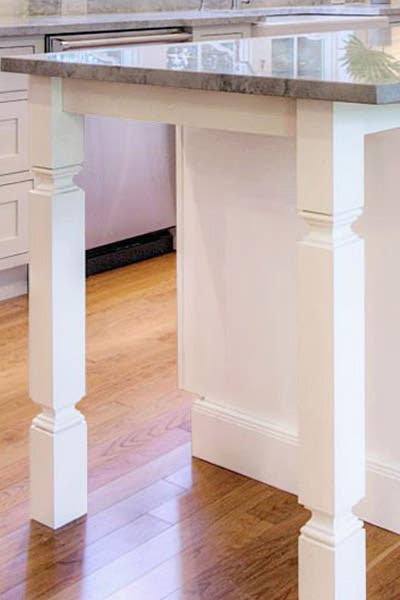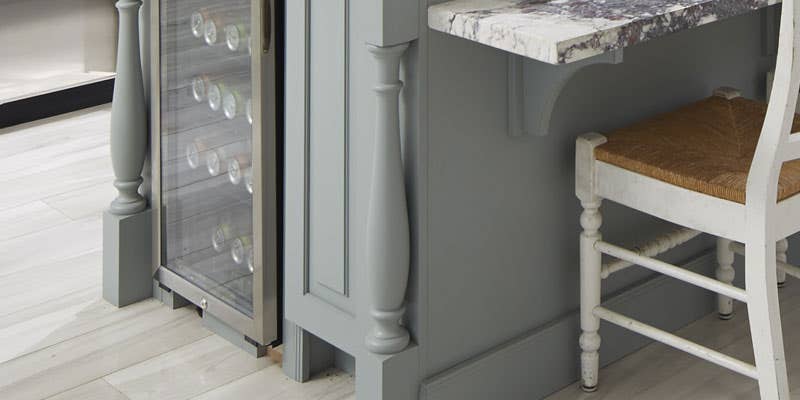Ingenious and Stylish Layouts in Modern Legs For Kitchen Island Solutions
Ingenious and Stylish Layouts in Modern Legs For Kitchen Island Solutions
Blog Article
A Guide to Selecting the Perfect Legs For Cooking Area Island for Your Home
Choosing the excellent legs for your kitchen area island is a nuanced decision that impacts both the functionality and aesthetic allure of this main room. Elements such as elevation, materials, and design play an important duty in balancing your island with the overall cooking area style. In addition, understanding the value of security and maintenance can dramatically influence your option. As you think about these aspects, it comes to be evident that the right legs can transform not just the appearance of your kitchen however additionally its usability for many years to come. What particular functions should you prioritize in this selection process?

Recognizing Kitchen Area Island Legs
When selecting legs for a kitchen area island, it's necessary to comprehend their aesthetic and functional roles in the overall design. The legs act as a critical support system, guaranteeing stability and toughness for the island, which often functions as a workspace, eating location, or collecting area. The selection of material and building technique need to be durable enough to hold up against day-to-day use and possible wear.
Along with their architectural obligations, legs add substantially to the island's aesthetic appeal. They can enhance the cooking area's style, whether through conventional, contemporary, or eclectic layouts. The height and proportion of the legs are additionally important factors to consider; they need to balance with the island's countertop elevation while guaranteeing comfortable seating for those using the space.
Additionally, the leg style can influence the total flow of the cooking area. Open, ventilated leg designs can develop a feeling of agility, while strong, considerable legs may convey a more grounded and stable visual - Legs For Kitchen Island. Understanding these useful and aesthetic facets will certainly assist homeowners in making notified choices that complement their kitchen's style and boost its use
Popular Styles and Products
The option of legs for a kitchen island encompasses a range of prominent styles and materials, each offering unique features that can boost both capability and appearances. Conventional legs commonly show ornate information and craftsmanship, enhancing timeless kitchen area styles.

Elevation and Security Factors To Consider

Security is an additional important factor to consider. The legs of the kitchen island need to offer appropriate support, making certain that the structure can withstand day-to-day use without changing or wobbling. Product selection plays a significant role in security; steel legs, for example, tend to supply better toughness contrasted to wood. In addition, making sure that the island is securely secured to the floor or wall surface can improve security, particularly for bigger islands that might bear considerable weight.
Matching Your Kitchen Area Aesthetic
Choosing the right legs for your cooking area island goes beyond capability; it likewise plays a substantial function in the general visual of the space (Legs For Kitchen Island). When picking legs, think about the design style of your cooking area.
Shade is an additional important aspect. Legs that enhance web or contrast with your island's surface and surrounding kitchen cabinetry can produce aesthetic consistency or striking focal points. Coupling dark wood legs with a light marble kitchen counter can include depth and passion. Additionally, take into consideration the our website finish of the legs; matte, glossy, or textured finishes can considerably influence the overall feel of the cooking area.
Installment and Maintenance Tips
Mounting kitchen area island legs requires cautious attention to information to guarantee both security and aesthetic allure. Begin by choosing an ideal place for your island, guaranteeing it is level and has ample area for movement. Utilize a stud finder to situate wall studs if you are affixing the legs to a wall surface or using braces for added assistance. Mark the positioning of the legs accurately prior to exploration.
When securing the legs, utilize high-quality screws and, if needed, timber adhesive for additional stamina. For steel legs, make certain that you are using suitable anchors and devices to avoid damages to your floor covering. It is recommended to check for levelness after setup, making changes as required to stay clear of wobbling.
Maintenance is similarly crucial for long life - Legs For Kitchen Island. Routinely inspect the legs for any type of indicators of wear or helping to loosen, specifically in high-traffic locations. Tidy the legs with a suitable cleaner, preventing rough products that may scrape the surface area. For wooden legs, take into consideration applying a wood conditioner regularly to keep their coating. By following these installation and maintenance suggestions, you can ensure that your cooking area island legs continue to be both aesthetically attractive and practical.
Conclusion
In conclusion, picking the suitable legs for a kitchen island requires careful factor to consider of elevation, stability, and visual compatibility. Ultimately, thoughtful leg option plays an essential duty in elevating both the functionality and design of the kitchen area room.
When choosing legs for a cooking area island, it's important to comprehend their visual and functional roles in the general style. Open, ventilated leg designs can produce a feeling of agility, while solid, substantial legs may share a much more based and secure aesthetic. The legs of the kitchen island must offer ample assistance, making certain that the structure can withstand day-to-day use without wobbling or shifting.Setting up kitchen area island legs calls for mindful attention to detail to make certain both stability and visual allure.In conclusion, picking the appropriate legs for a kitchen area island necessitates mindful consideration of height, security, and aesthetic compatibility.
Report this page